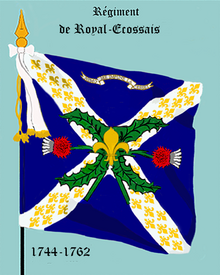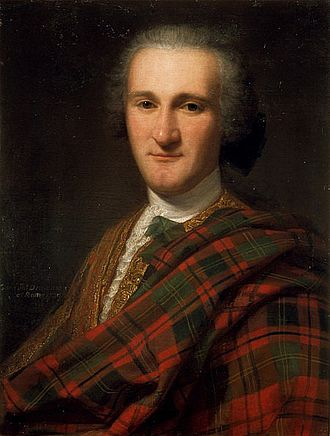
The Battle of Culloden was the final confrontation of the Jacobite rising of 1745. On 16 April 1746, the Jacobite army of Charles Edward Stuart was decisively defeated by a British government force under Prince William Augustus, Duke of Cumberland, on Drummossie Moor near Inverness in the Scottish Highlands. It was the last pitched battle fought on British soil.

The Battle of Prestonpans, also known as the Battle of Gladsmuir, was fought on 21 September 1745, near Prestonpans, in East Lothian; it was the first significant engagement of the Jacobite rising of 1745.
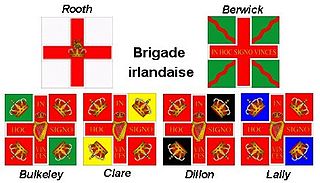
The Irish Brigade was a brigade in the French Royal Army composed of Irish exiles, led by Lord Mountcashel. It was formed in May 1690 when five Jacobite regiments were sent from Ireland to France in exchange for a larger force of French infantry who were sent to fight in the Williamite War in Ireland. The regiments comprising the Irish Brigade retained their special status as foreign units in the French Army until nationalised in 1791.
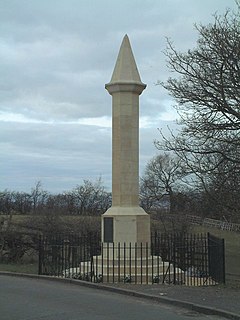
The Battle of Falkirk Muir, also known as the Battle of Falkirk took place on 17 January 1746 during the Jacobite rising of 1745. While a Jacobite victory, lack of co-ordination meant they failed to take advantage of their success and it had little impact on the campaign.

Alastair MacDonell of Glengarry, also known as Alasdair Ruadh MacDomhnaill, was the 13th chief of Clan MacDonell of Glengarry. Brought up as a Catholic and largely educated in France, he was arrested in November 1745 on his way to join the 1745 Jacobite Rising.

Lord George Murray (1694-1760), sixth son of John Murray, 1st Duke of Atholl, was a Scottish nobleman and soldier who took part in the Jacobite rebellions of 1715, 1719, and played a senior role in that of 1745.
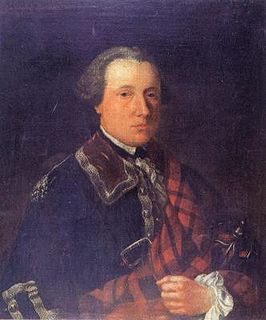
Donald Cameron of Lochiel, was hereditary chief of Clan Cameron, traditionally loyal to the exiled House of Stuart. His father John was permanently exiled after the 1715 Rising and when his grandfather Sir Ewen Cameron died in 1719, Donald assumed his duties as 'Lochiel.'

William Drummond, 4th Viscount Strathallan was a Scottish peer and Jacobite, who died at the Battle of Culloden.

Sir John Murray of Broughton, 7th Baronet of Stanhope, also known as Murray of Broughton, was a Scottish baronet, who served as Jacobite Secretary of State during the 1745 Rising.

David Wemyss, Lord Elcho and de jure 6th Earl of Wemyss, was a Scottish peer and Jacobite, attainted for his part in the 1745 Rising and deprived of titles and estates.

Lieutenant General John Huske was a British military officer, whose active service began in 1707 during the War of the Spanish Succession, and ended in 1748.

The Jacobite rising of 1745, also known as the Forty-five Rebellion or simply the '45, was an attempt by Charles Edward Stuart to regain the British throne for his father, James Francis Edward Stuart. It took place during the War of the Austrian Succession, when the bulk of the British Army was fighting in mainland Europe, and proved to be the last in a series of revolts that began in 1689, with major outbreaks in 1708, 1715 and 1719.

The Manchester Regiment was a Jacobite unit raised during the 1745 Rebellion and the only significant number of English recruits willing to fight for Charles Edward Stuart in his attempt to regain the British throne for his father. Raised in late November 1745, the majority were captured in December at Carlisle; eleven officers and sixteen members of the rank and file were executed in 1746, over a quarter of all those executed for their role in the Rising.

Lord Lewis Gordon was a Scottish nobleman, naval officer and Jacobite, remembered largely for participating in the Jacobite rising of 1745, during which Charles Edward Stuart appointed him Lord-lieutenant of Aberdeenshire and Banffshire.

James Drummond, 6th Earl and 3rd titular Duke of Perth was a Scottish landowner best known for his participation in the Jacobite rising of 1745, during which Charles Edward Stuart attempted to regain the British throne for the House of Stuart.

John Drummond (1714–1747), titular 7th Earl and 4th Duke of Perth, often referred to by his courtesy title Lord John Drummond, was a Franco-Scottish nobleman, soldier and Jacobite.

Sir John William O'Sullivan was an Irish professional soldier. He spent most of his career in the service of France, but is perhaps best known for his involvement in the Jacobite rising of 1745, an attempt to regain the British throne for the exiled House of Stuart. During the Rising he acted as adjutant general and quartermaster general of the Jacobite army and had a major influence on the campaign.

The Siege of Stirling Castle took place from 8 January to 1 February 1746, during the 1745 Rising, when a Jacobite force besieged Stirling Castle, held by a government garrison under William Blakeney.
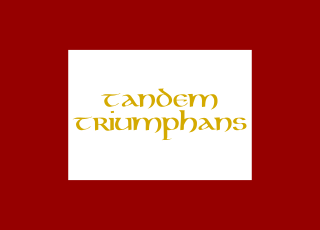
The Jacobite Army, sometimes referred to as the Highland Army, was the military force assembled by Charles Edward Stuart and his Jacobite supporters during the 1745 Rising that attempted to restore the House of Stuart to the British throne.

John Gordon of Glenbucket was a Scottish Jacobite, or supporter of the claim of the House of Stuart to the British throne. Laird of a minor estate in Aberdeenshire, he fought in several successive Jacobite risings. Following the failure of the 1745 rising, in which he served with the rank of Major-General, he escaped to Norway before settling in France, where he died in 1750.
